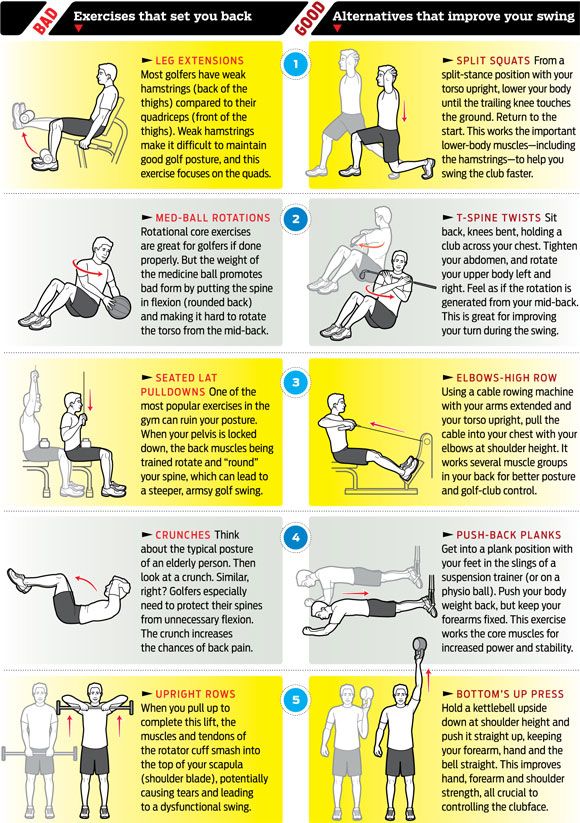Key Takeaways
- Increasing golf swing speed can lead to longer drives and lower scores.
- Core, leg, and arm strength are crucial for a powerful swing.
- Incorporating specific exercises into your routine can improve swing mechanics.
- Consistency and proper form are key to maximizing swing speed gains.
- Tracking progress and setting goals help maintain motivation.
Enhancing Golf Swing Speed Through Fitness
Every golfer dreams of hitting the ball farther and more accurately. Increasing your swing speed is one of the most effective ways to achieve this. But how do we get there? The answer lies in fitness. By focusing on specific exercises, you can build the strength and flexibility needed to enhance your swing speed.
Why Swing Speed Matters in Golf
Swing speed isn't just about hitting the ball harder; it's about efficiency and technique. A faster swing speed translates into greater energy transfer from the club to the ball, resulting in longer distances. This means you can reach greens in fewer strokes, giving you a competitive edge.
“Increasing swing speed is not just about power; it's about the efficiency of your swing mechanics.” – Golf Digest
Beyond distance, a faster swing can improve your overall game. With increased speed, you have more control over the ball's trajectory and spin, which can lead to more accurate shots. This is why many professional golfers focus extensively on exercises that enhance their swing speed.
Benefits of Increased Swing Speed
The benefits of increased swing speed extend beyond the golf course. For starters, working on your swing speed can improve your overall physical fitness. It requires strength, flexibility, and coordination, all of which contribute to a healthier lifestyle.
Moreover, as you see improvements in your swing speed, you'll likely notice a boost in your confidence. Knowing that you can hit the ball farther and more accurately can significantly enhance your enjoyment of the game. This newfound confidence can translate to better performance in tournaments and casual rounds alike.
Most importantly, increasing your swing speed can open up new strategic possibilities on the course. With the ability to hit longer drives, you can approach holes differently, potentially lowering your scores and improving your overall game. To get started, consider exploring golf fitness programs that can enhance your swing speed.
Key Muscle Groups for Golfers
To maximize your swing speed, it's crucial to focus on strengthening specific muscle groups. These include the core, legs, and arms, each playing a vital role in generating power and maintaining balance throughout your swing.
Power from the Core
The core is the engine of your golf swing. It provides stability and allows you to transfer energy efficiently from your lower body to your upper body. A strong core helps maintain balance during your swing, which is essential for generating maximum speed.
Exercises like planks, Russian twists, and medicine ball rotations are excellent for building core strength. These exercises not only improve your swing speed but also enhance your overall posture and stability, which are critical for a consistent golf game.
Importance of Leg Strength
Your legs are the foundation of your swing. They provide the power needed to initiate the downswing and support your body throughout the motion. Strong legs enable you to maintain a stable base, which is crucial for generating speed and accuracy. For more information on exercises to enhance your leg strength, consider exploring exercises to swing faster.
Incorporate exercises such as squats, lunges, and calf raises into your routine to build leg strength. These exercises will help you generate more power from the ground up, leading to a faster, more efficient swing.
Role of Arm and Shoulder Muscles
While the core and legs provide the foundation for your swing, your arms and shoulders play a significant role in delivering the clubhead speed. Strong arms and shoulders allow you to accelerate the club through impact, maximizing the energy transferred to the ball.
Exercises like push-ups, dumbbell presses, and resistance band workouts can help build the strength and flexibility needed in your arms and shoulders. By focusing on these areas, you'll be able to generate more speed and control in your swing. For more targeted exercises, check out these high-impact drills to rapidly improve your golf swing speed.
Lower Body Workouts
Building strong legs is fundamental to increasing your golf swing speed. The legs act as the powerhouse of your swing, driving force from the ground through your body to the club. Incorporating exercises like squats, lunges, and calf raises will not only improve your swing speed but also enhance your overall stability and balance.
Squats are particularly effective because they engage multiple muscle groups, including the quadriceps, hamstrings, and glutes. To perform a squat, stand with your feet shoulder-width apart, lower your body as if sitting back into a chair, and then push through your heels to return to the starting position. This movement mimics the powerful push-off you need during your swing.
Lunges, on the other hand, are excellent for targeting the muscles individually and improving balance. Step forward with one foot, lowering your hips until both knees are bent at about a 90-degree angle. Push back to the starting position and repeat with the other leg. This exercise will help you maintain a strong, stable base throughout your swing.
Upper Body and Arm Drills
Your upper body and arms are critical for generating clubhead speed. They are responsible for the acceleration and control needed to strike the ball with precision. Push-ups and dumbbell presses are great exercises to build strength in these areas.
Push-ups are a simple yet effective exercise that can be done anywhere. They engage the chest, shoulders, and triceps, all of which are crucial for a powerful swing. For more tips on enhancing your golf performance, check out these high-impact drills to improve your swing speed. Start in a plank position, lower your body until your chest nearly touches the floor, and then push back up to the starting position. Ensure your body remains in a straight line throughout the movement.
Dumbbell presses, particularly the shoulder press, are excellent for strengthening the shoulders and upper arms. Sit or stand with a dumbbell in each hand at shoulder height, palms facing forward. Press the weights overhead until your arms are fully extended, then lower them back to the starting position. This exercise will help you achieve a more controlled and powerful swing.
Integrating Exercises into a Routine
Now that you know which exercises to focus on, it's time to integrate them into a regular workout routine. Consistency is key to seeing improvements in your swing speed. Aim to work out at least three times a week, alternating between lower body, upper body, and core exercises to ensure a balanced approach.
Start each session with a 5-10 minute warm-up to get your muscles ready for the workout. This could be a brisk walk, light jog, or dynamic stretching. A proper warm-up reduces the risk of injury and improves your overall performance.
After your workout, don't forget to cool down and stretch. This helps prevent soreness and maintains flexibility, which is essential for a smooth, efficient swing.
- Monday: Lower Body Focus (Squats, Lunges, Calf Raises)
- Wednesday: Upper Body and Arms (Push-ups, Dumbbell Presses)
- Friday: Core Strength (Planks, Russian Twists, Medicine Ball Rotations)
Building a Balanced Workout Plan
Creating a balanced workout plan ensures that you're not overworking any one part of your body while neglecting others. This balance is crucial for maintaining overall fitness and preventing injury. Combine strength training with flexibility exercises to maximize your swing speed potential.
For example, on days focused on strength training, incorporate exercises like squats and push-ups. On alternate days, focus on flexibility with yoga or stretching routines. This varied approach will keep your body well-rounded and ready for the demands of golf.
Consistency and Progression
“The key to success is consistency. Stick with your routine, and you'll see results over time.” – PGA Pro
Consistency is vital when working to improve your golf swing speed. It's important to stick to your workout plan and make gradual progress. Start with lighter weights and simpler exercises, gradually increasing the intensity as your strength and endurance improve.
Monitor your progress by keeping a workout journal. Record the exercises, sets, reps, and weights you use each session. This will help you track improvements and identify areas that need more focus.
Remember, patience is key. Improvements in swing speed won't happen overnight, but with dedication and consistency, you'll see significant progress.

“Exercises for Better Golf” from www.uwbrandingiron.com and used with no modifications.
Importance of Technique and Form
While fitness is crucial for increasing swing speed, technique and form play an equally important role. Without proper technique, even the strongest golfer will struggle to achieve optimal speed and accuracy. Let's dive into the components of a proper golf swing.
Key Components of a Proper Golf Swing
A proper golf swing involves several key components: grip, stance, posture, and swing plane. Each of these elements contributes to the efficiency and power of your swing. Ensuring that each component is correctly executed will help you maximize your swing speed.
How Form Influences Speed
“A good swing is about more than just strength; it's about precision and timing.” – Golf Coach
Your form directly influences your swing speed. A smooth, fluid motion allows for maximum energy transfer from the club to the ball. If your form is off, you'll lose speed and accuracy. Focus on maintaining a relaxed grip, a balanced stance, and a proper swing plane to ensure your form supports your speed goals.
Practice drills that emphasize these elements. For example, use alignment sticks to check your swing plane or practice swings in front of a mirror to ensure proper posture. These drills will help you fine-tune your form and boost your swing speed.
Common Mistakes to Avoid
Many golfers make common mistakes that hinder their swing speed. One of the most frequent errors is gripping the club too tightly. A tight grip restricts your wrist movement and reduces the fluidity of your swing.
Another mistake is neglecting the follow-through. A full follow-through allows for maximum energy transfer and helps maintain balance. Ensure you complete your swing and finish in a balanced position. For more tips, check out this setup to follow-through guide.
Avoid these mistakes by practicing regularly and seeking feedback from experienced golfers or coaches. With attention to detail and consistent practice, you can overcome these common pitfalls and enhance your swing speed.
Tips for Maintaining Motivation
Staying motivated on your journey to improve swing speed can be challenging, but it's essential for long-term success. Set realistic goals that are specific and achievable. For example, aim to increase your swing speed by 5 mph over the next three months.
Tracking your progress is another powerful motivator. Use a swing speed radar or a smartphone app to measure your speed regularly. Seeing tangible improvements will keep you motivated and focused on your goals.
Finally, don't get discouraged by plateaus. Progress may slow down at times, but persistence is key. Continue to push yourself, adjust your routine as needed, and remember that every small improvement brings you closer to your ultimate goal.
Setting Realistic Goals
Setting realistic goals is essential when working to improve your golf swing speed. It's important to remember that progress takes time and effort. Start by setting specific, measurable goals that you can track over time. For instance, aim to increase your swing speed by 5 mph over the next three months. This gives you a clear target to work towards and helps maintain focus.
Break down your larger goal into smaller, achievable milestones. Celebrate each milestone as you reach it, as this will boost your motivation and confidence. For example, if your overall goal is to increase swing speed by 10 mph, celebrate when you achieve the first 2 mph increase.
Another crucial aspect is to be flexible with your goals. If you find that progress is slower than expected, don't be discouraged. Instead, adjust your goals to reflect your current pace and continue pushing forward. Remember, persistence is key to achieving your swing speed objectives.
To keep your goals realistic and achievable, regularly assess your progress and make necessary adjustments. This ensures that you stay on track and maintain motivation throughout your journey.
- Set specific, measurable goals.
- Break down larger goals into smaller milestones.
- Celebrate achievements to boost motivation.
- Be flexible and adjust goals as needed.
- Regularly assess progress and make adjustments.
Tracking Progress
Tracking your progress is a powerful tool for maintaining motivation and ensuring you're on the right path. Use a swing speed radar or a smartphone app to measure your speed regularly. This allows you to see tangible improvements and identify areas that need more focus. For additional tips, check out these high-impact drills to improve your golf swing speed.
Keep a workout journal to record your exercises, sets, reps, and weights used during each session. This helps you track improvements in strength and endurance, which are crucial for increasing swing speed. Additionally, note any changes in your swing speed measurements to monitor progress over time.
Review your journal regularly to identify patterns and trends. This will help you pinpoint what works best for you and make informed decisions about your training routine. By tracking your progress, you'll stay motivated and focused on achieving your swing speed goals.
Overcoming Plateaus
Plateaus are a natural part of any fitness journey, and it's important to approach them with patience and persistence. When progress slows down, take a step back and evaluate your routine. Consider making changes to your exercises, increasing intensity, or incorporating new workouts to challenge your body.
Sometimes, a plateau may be due to overtraining. Ensure you're giving your body enough time to rest and recover between workouts. This allows your muscles to repair and grow stronger, ultimately improving your swing speed.
Seek feedback from experienced golfers or coaches to gain new insights and techniques. They can help you identify areas for improvement and suggest strategies to overcome plateaus. For instance, you might explore high-impact drills to enhance your swing speed. Remember, persistence and adaptability are key to breaking through these barriers and achieving your swing speed goals.
Frequently Asked Questions
Many golfers have questions about how to effectively increase their swing speed. Here, I'll address some of the most common inquiries to help you on your journey.
What exercises are best for increasing swing speed?
Core strengthening exercises like planks and Russian twists are essential for building a strong foundation. Lower body workouts, such as squats and lunges, provide the power needed for a powerful swing. Upper body and arm drills, including push-ups and dumbbell presses, help generate clubhead speed.
Incorporating these exercises into a balanced routine will improve your overall strength, flexibility, and coordination, all of which contribute to increased swing speed.
How often should I practice these exercises?
For optimal results, aim to work out at least three times a week. Alternate between lower body, upper body, and core exercises to ensure a balanced approach. Consistency is key, so make sure to stick to your routine and gradually increase the intensity as your strength and endurance improve. For additional tips on enhancing your performance, you can explore this guide to increase swing speed.
Remember to include rest days in your schedule to allow your muscles to recover and grow stronger. This will help prevent injury and ensure continued progress. For those looking to enhance their golf performance, it's also crucial to avoid common mistakes that can hinder your swing speed.
Can I improve swing speed without equipment?
Yes, many exercises can be performed without equipment, making them accessible to everyone. Bodyweight exercises like push-ups, planks, and lunges are highly effective for building strength and improving swing speed.
Additionally, incorporating dynamic stretching and flexibility exercises into your routine will enhance your swing mechanics and contribute to increased speed. The key is to remain consistent and focused on your goals.
What role does flexibility play in swing speed?
Flexibility is crucial for achieving a smooth, efficient swing. It allows for a greater range of motion, enabling you to generate more speed and power. Incorporating stretching exercises and yoga into your routine will help improve flexibility and prevent injury.
Focus on stretching the major muscle groups involved in your swing, such as the hips, shoulders, and lower back. This will ensure that your body remains agile and ready for the demands of golf.
Do professional golfers train the same way?
Professional golfers often follow similar training principles, focusing on strength, flexibility, and technique. However, their routines are typically more intense and tailored to their specific needs and goals. They may also work with personal trainers and coaches to ensure optimal performance.
While you may not have access to the same resources as a professional golfer, you can still apply these principles to your own training routine. Focus on building a strong foundation, maintaining consistency, and continuously working to improve your swing speed.

